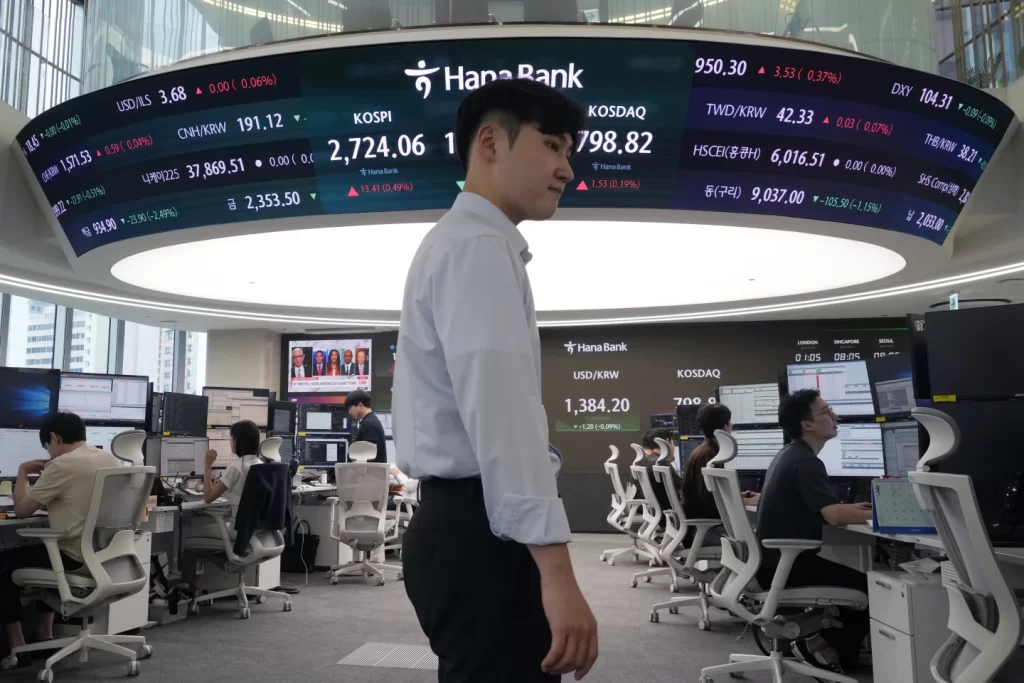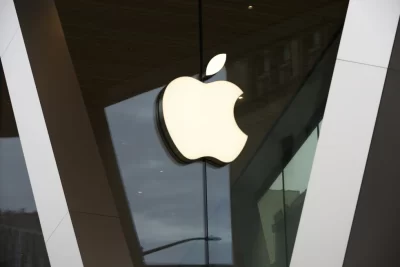
BANGKOK — World shares were mostly higher on Friday after Wall Street made a patchy comeback from its worst loss since 2022, with most stocks rising even though superstar Big Tech stocks gave back more of their stellar gains.
Germany’s DAX edged 0.2% higher to 18,326.36 and the CAC 40 was up 0.8% at 7,487.88. In London, the FTSE advanced 0.9% to 8,257.80.
The future for the S&P 500 advanced 0.9% while that for the Dow Jones Industrial Average was up 0.5%.
In Asian trading, Tokyo’s Nikkei 225 index gave up early gains to slip 0.5% to 37,667.41. It sank 3.3% the day before amid heavy sell-offs in many world markets.
Tokyo’s core consumer price index rose 2.2% in July, rising for the third straight month to its highest level in four months, adding to expectations that the Bank of Japan may raise its near-zero benchmark interest rate at a policy meeting next week.
Hong Kong’s Hang Seng edged 0.1% higher, to 17,021.31, while the Shanghai Composite index also added 0.1%, to 2,890.90.
Australia’s S&P/ASX 200 surged 0.8% to 7,921.30, while the Kospi in Seoul added 0.8% to 2,731.90.
Taiwan’s Taiex sank 3.3% as it reopened after markets there were closed Thursday due to a typhoon. It was catching up with the retreat on Wall Street on Wednesday, which was the S&P 500’s worst plunge since 2022. Taiwan Semiconductor Manufacturing Corp. plunged 5.6%, tracking continued declines in Big Tech companies.
In Bangkok, the SET rose 0.9%, while India’s Sensex gained 1.4%. On Thursday, the S&P 500 lost 0.5% following its slide from the day before. The Dow added 0.2%, while the Nasdaq composite sank 0.9%.
The Russell 2000 index of smaller stocks jumped 1.3%. It’s up 8.6% this month, versus a loss of 1.1% for the big stocks in the S&P 500.
An update is due later Friday about the Federal Reserve’s preferred measure of inflation, but since price increases have largely resumed their slowdown, the widespread expectation is for the Federal Reserve to begin cutting its main interest rate from the highest level in more than two decades. Following Thursday’s report, traders still saw a 100% probability that the Fed will begin doing so in September, according to data from CME Group.
Cuts to rates would release pressure that’s built up on both the economy and financial markets, and investors are thinking it would be a big boost for stocks whose profits are more closely tied to the strength of the economy than Big Tech’s.
Continued losses for Nvidia and most of the handful of Big Tech stocks that have been primarily responsible for the S&P 500’s run to records this year weighed on the market. They had tumbled a day earlier after profit reports from Tesla and Alphabet underwhelmed investors, raising concerns that the market’s frenzy around artificial-intelligence technology had sent prices too high.
Whether the handful of stocks known as the “Magnificent Seven” are rising or falling makes a huge impact on Wall Street because they’ve grown so mammoth in market value. That gives their stock movements extra sway on the S&P 500 and other indexes.
Still, the majority of U.S. stocks rallied Thursday after a surprisingly strong report on the U.S. economy raised hopes for profits of smaller companies’ other formerly unloved areas of the market.
The economy’s growth accelerated to an estimated 2.8% annual rate from April through June, double the rate from the prior quarter but not so hot that it fanned worries about upward pressure on inflation.
In other dealings early Friday, U.S. benchmark crude oil shed 25 cents to $78.03 per barrel in electronic trading on the New York Mercantile Exchange.
Brent crude, the international standard, picked up 24 cents to $81.15 per barrel.
The U.S. dollar rose to 154.15 Japanese yen from 153.93 yen. The euro rose to $1.0856 from $1.0847.







